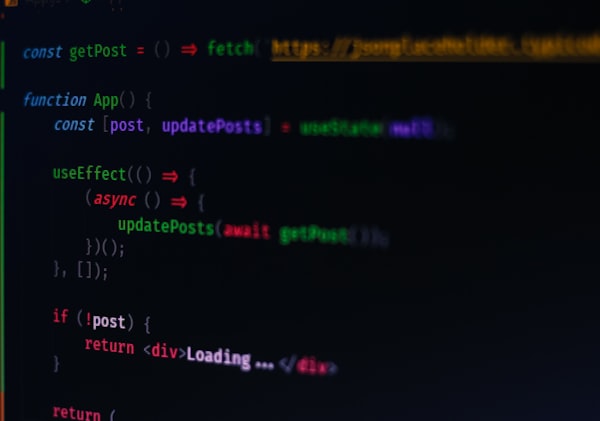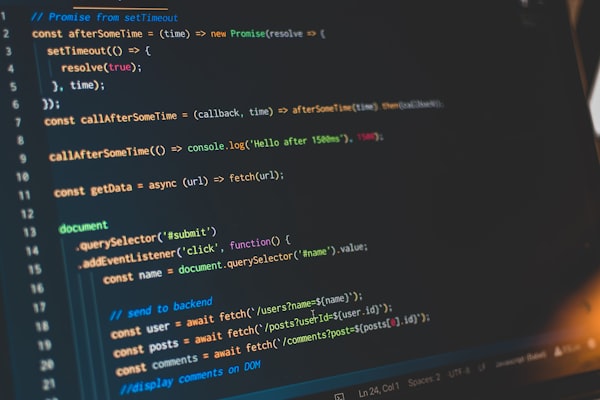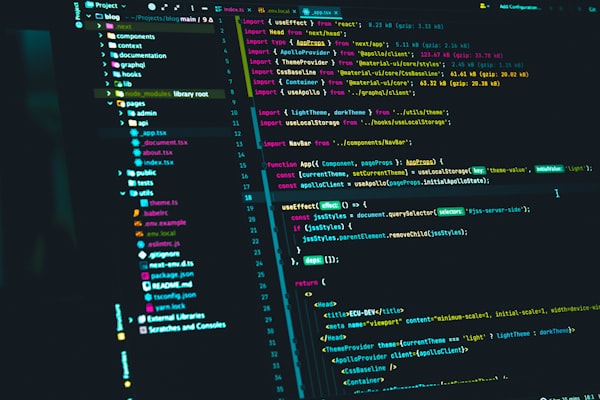1. Introduction to Functional Programming: Basic Concepts and Principles
Welcome, code whisperers and bug slayers! Buckle up for an enlightening journey into the land of Functional Programming (FP) in JavaScript. Consider it our magical kingdom where data is king and side effects are strictly forbidden (They're banished, can you believe it?).
Now, you might be thinking, "Functional Programming? Sounds fancy! But what does it even mean?" Well, my dear friend, it's a programming paradigm that treats computation as the evaluation of mathematical functions. In other words, it's like we're back in high school math class, but this time with a keyboard and a compiler, not a dusty blackboard and chalk!
In functional programming, we love purity, and we're not talking about spring water here. A pure function is like that reliable friend who's always the same no matter what. Give it the same inputs, and it'll give you the same outputs every time. And the best part? It doesn't muddle with anything outside its scope. No side effects, remember?
Next on our parade of principles is immutability. This is the strong vow we make that we shall not, under any circumstances, change our data once it's been created. Think of it as making a clone of your favorite superhero action figure instead of painting over the original because you decided you like the villain better.
Then we have first-class functions, our VIPs in this JavaScript shindig. These are the functions that we can assign to variables, pass as arguments, and return from other functions. They've got all access passes!
And last, but definitely not least, we have higher-order functions. These aren't functions with a superiority complex. Nope, they're the good Samaritans who accept other functions as parameters or return them as a result.
We'll dive deeper into each of these fascinating principles as we go along, so keep those code-tinted glasses on, and let's march ahead!
2. Understanding the Key Principles of Functional Programming in JavaScript
Alright, brace yourselves, JavaScript Jedi, it's time to delve deeper into the rabbit hole. Let's decode these fancy-sounding principles one by one. It's time to get our hands (and minds) dirty with some functional JavaScript goodness!
Pure Functions: We're back to our trusty old friends, pure functions. Remember? Always the same, never changing? Let's see an example to refresh our memories:
function add(x, y) {
return x + y;
}
Here, our add function is the epitome of purity. Why? Because it will always give you the same output for the same inputs, and it doesn't perform any sneaky tricks behind your back (like changing a global variable or making a network call). So reliable!
Immutability: This is where JavaScript programmers make their solemn promise to preserve data integrity. Any changes required? Make a copy, perform your operation, and voila! Original data, untouched. Here's an illustration:
let array1 = [1, 2, 3];
let array2 = [...array1, 4, 5];
Notice how we're not messing with array1 but creating a new array2? That's immutability, folks!
First-Class Functions: JavaScript, being the friendly language that it is, treats functions just like any other object. That means you can assign them to variables, pass them around as arguments, or even make them return gifts, er, other functions! Consider this example:
let sayHello = function(name) {
return `Hello, ${name}!`;
}
In this case, sayHello is a first-class citizen in the kingdom of JavaScript. It's a function assigned to a variable!
Higher-Order Functions: And finally, the crème de la crème, higher-order functions! These are the humble functions that take in other functions as parameters or return them as results. Callbacks and Array methods like map(), filter(), and reduce() are prime examples of this. Here's a simple demonstration:
let numbers = [1, 2, 3, 4, 5];
let doubled = numbers.map(number => number * 2);
In the example above, map() is the higher-order function graciously accepting another function as its argument.
There you go! We've cracked the functional programming code! With these principles, we're ready to embark on a coding adventure filled with pure functions, immutable data, first-class functions, and higher-order functions. Let's gear up, as we're about to get practical!
3. Pure Functions and Immutability: Pillars of Functional JavaScript
Alright, it's time to don our JavaScript code-cracking helmets and dig deeper into the stalwart pillars of functional programming: Pure Functions and Immutability. Just like our favorite superhero duo, they're here to save the day (and our code)!
Pure Functions: If functions were people, pure functions would be those with the cleanest reputations in town. They are the epitome of dependability and honesty, a beacon of reliability in the tumultuous sea of mutable state. Here's what makes them so darn pure:
They always give the same output for the same input. Like our reliable add function from before, give it the same numbers to add and it will always return the same result, no matter how many times you call it.
They don't mess with anything outside their scope. They're not interested in that global variable, or the data coming from another function. Nope, they mind their own business. Here's an example:
let globalVar = 10;
function pureFunction(x) {
return x * 2;
}
The function pureFunction doesn't care about globalVar. It takes in x, doubles it, and that's that!
Immutability: Next up, we have the steadfast knight of data integrity, Immutability. In the realm of functional JavaScript, Immutability is all about respecting the data. Once a data value is created, it's here to stay. Any changes you want to make? You create a new data value, my friend.
Immutability in JavaScript can be implemented using various techniques. For arrays and objects, we can use methods like concat(), slice(), or the spread operator (...). Like in our previous example, when we expanded array1 to create array2, without causing any harm to array1.
let array1 = [1, 2, 3];
let array2 = [...array1, 4, 5];
Here, array1 remains unaltered, and we maintain the harmony of our functional realm!
Together, Pure Functions and Immutability form the formidable backbone of Functional JavaScript. With them, we're on our way to coding paradise - cleaner, more readable, and more maintainable code.
So, with your helmets still on and tools in hand, let's journey forward, JavaScript adventurers, to the mystical land of Higher-Order Functions and Closures!
4. Higher-Order Functions and Closures in JavaScript: Deeper Dive
Alright, JavaScript jedis! Time to fasten your seatbelts as we venture deeper into the matrix of functional programming. Today, we're meeting the VIPs of our JavaScript narrative: Higher-Order Functions and Closures.
Higher-Order Functions: Imagine a function that's so awesome, it accepts other functions as parameters, or even returns them as results. Sounds pretty super, right? That's a higher-order function for you, the altruists of our JavaScript kingdom.
A fan of map(), filter(), or reduce()? Congrats, you've been using higher-order functions all along! Here's our old friend map() in action:
let numbers = [1, 2, 3, 4, 5];
let doubled = numbers.map(number => number * 2);
In this example, map() is happily accepting another function (number => number * 2) as its parameter. It then applies this function to each item in the numbers array. No wonder higher-order functions are considered the lifeblood of functional programming!
Closures: Now, if functions were a family, closures would be like those wise grandparents who remember everything. A closure is a function that has access to its own scope, the outer function's scope, and the global scope. It's like a memory bank for functions.
Let's meet a closure in its natural habitat:
function outerFunction(x) {
return function innerFunction(y) {
return x + y;
}
}
let addFive = outerFunction(5);
console.log(addFive(3)); // Outputs: 8
In the example above, innerFunction is a closure. It 'remembers' the value of x from its outer function even after the outer function has finished executing.
Higher-order functions and closures are crucial for advanced JavaScript programming. Together, they unlock the true power of functional programming, helping us write more efficient and maintainable code.
Now that we've had our close encounter with these functional programming heroes, are you ready for a tour of the best JavaScript libraries that champion these concepts? Hold on tight, we're just getting to the exciting part!
5. Common Functional Programming Techniques in JavaScript
Alright, fellow code knights, time to roll up our sleeves and get down to the nitty-gritty of functional programming. Let's explore some common techniques that will have you writing cleaner, more efficient JavaScript code faster than you can say 'callback'!
Function Composition: This technique is all about creating new functions by combining existing ones, sort of like assembling a superhero team. In functional programming, this is like your daily bread and butter. For instance:
let greet = name => `Hello, ${name}!`;
let excited = greeting => `${greeting} How exciting!`;
let excitedGreeting = name => excited(greet(name));
console.log(excitedGreeting('JavaScript Coder'));
// Outputs: 'Hello, JavaScript Coder! How exciting!'
In this example, excitedGreeting is a composition of the greet and excited functions. Exciting, isn't it?
Recursion: This is a handy technique where a function calls itself until it arrives at a result. It's like playing a game of 'Who am I?' until you reach the answer. In JavaScript, recursion can be a powerful tool for tasks such as traversing a tree structure or solving complex mathematical problems.
function factorial(n) {
if (n === 0) {
return 1;
}
return n * factorial(n - 1);
}
console.log(factorial(5)); // Outputs: 120
In the example above, factorial keeps calling itself until it reaches the base case of n === 0.
Currying: Named after the mathematician Haskell Curry (not the delicious dish!), currying is a technique where a function with multiple arguments is transformed into a sequence of functions, each with a single argument. It's like breaking down a complex question into simpler, manageable parts.
let multiply = x => y => x * y;
let double = multiply(2);
console.log(double(3)); // Outputs: 6
In the example above, multiply is a curried function. We create double by fixing the first argument of multiply to 2.
These are just a few of the techniques that make functional programming in JavaScript such a joy. Embrace them, and you'll be writing code that's not only efficient and easy to debug, but also as readable as a well-written novel.
6. Overview of the Best JavaScript Libraries for Functional Programming
Welcome back, JavaScript wizards! Now that we've equipped ourselves with functional programming principles and techniques, let's explore some magical tools, aka JavaScript libraries, that make functional programming as easy as pie (or should we say pi?).
- Lodash: Imagine a trusty Swiss army knife for JavaScript. That's Lodash for you! Its collection of utility functions for manipulating arrays, objects, and other functional goodies is just what you need when tackling complex programming tasks. Plus, with methods like
_.map(),_.filter(), and_.reduce(), it's a functional programming paradise. Oh, did we mention it's also pretty easy on the performance side? - Ramda: Ramda takes functional programming in JavaScript a notch higher. Its philosophy centers around currying and function composition, making it a real treat for hardcore functional programming enthusiasts. With Ramda, you can transform, create, and build new functions to your heart's content.
- Immutable.js: From the JavaScript wizards at Facebook, Immutable.js is the perfect sidekick to ensure immutability in your data structures. It offers a collection of Persistent Immutable data structures making it easier to work with data without the fear of unwanted mutations.
- RxJS: If you're into asynchronous programming, RxJS is the library for you. RxJS is all about working with asynchronous data streams using Observables. It provides a toolbox of operators like
map(),filter(), andconcatAll()that make dealing with events as easy as manipulating arrays. - underscore.js: This is one of the pioneering libraries that brought the charm of functional programming to JavaScript. It provides a whole slew of functional programming helpers without extending any built-in JavaScript objects.
So there you have it, the crème de la crème of JavaScript libraries for functional programming. Whether you're a beginner or a seasoned pro, these libraries can turbocharge your JavaScript coding journey.
7. Ramda vs Lodash: Comparing JavaScript's Top Functional Libraries
Buckle up, coding aficionados! We're heading into the grand arena for a face-off of epic proportions - Ramda versus Lodash. Two of JavaScript's top functional libraries are about to go head-to-head. Let's see how they fare in this clash of the titans!
Utility Prowess:
Lodash: With a sweeping collection of utility functions for dealing with arrays, objects, strings, and more, Lodash is a veritable toolbox for JavaScript programmers. Need to manipulate some data? Lodash probably has a function for it!
Ramda: Ramda matches Lodash's utility prowess, but with a more functional flavor. Its utility functions are curried by default, making them ideal for function composition. Plus, Ramda puts data last, making it even more composition-friendly.
Functional Philosophy:
Lodash: Lodash integrates seamlessly into imperative programming styles and plays well with other libraries. It's a great pick if you're just venturing into functional programming and want a tool that's flexible and adaptable.
Ramda: If you're a full-fledged functional programming enthusiast, Ramda is your go-to library. With its focus on immutability and side-effect-free functions, Ramda is designed to handle pure functional programming.
Performance:
Lodash: Known for its performance benefits, Lodash is optimized for speed and efficiency. It's a real workhorse when it comes to dealing with complex data manipulation tasks.
Ramda: While Ramda may not be as performant as Lodash for certain tasks, it compensates by offering more readability and maintainability. Its adherence to functional programming principles often results in cleaner, more elegant code.
Community & Support:
Both libraries boast strong, active communities and are well-documented, making it easier to find solutions and learn new techniques.
So, who's the winner in this epic showdown? Well, that depends on your needs, your coding style, and your project. Whether you're an adherent of pure functional programming (Ramda), or want a flexible tool for different programming styles (Lodash), both libraries have their unique strengths.
8. Practical Examples: Implementing Functional Programming in JavaScript
It's showtime, fellow JavaScript journeymen and journeywomen! We've talked the talk, now let's walk the walk. Let's dive into some practical examples of functional programming in JavaScript. We'll see how the concepts we've explored translate into cleaner, more efficient, and more readable code.
Pure Functions and Immutability:
Let's say we're building an e-commerce platform, and we want a function to calculate the total cost of items in a shopping cart. A pure function would be ideal here:
function calculateTotal(cart) {
return cart.reduce((total, item) => total + item.price * item.quantity, 0);
}
In the example above, calculateTotal is a pure function. Given the same cart input, it always returns the same total cost, without mutating the original cart array.
Higher-Order Functions:
Suppose we want to filter out products below a certain price. We can use the higher-order function filter():
function filterByPrice(items, threshold) {
return items.filter(item => item.price > threshold);
}
Here, filterByPrice returns a new array of items whose price is above the threshold. The original items array is not mutated.
Closures:
Closures can be useful when you want to create a function with some pre-filled parameters, like a discount rate for a specific group of customers:
function createDiscount(discount) {
return (price) => {
return price - price * discount;
}
}
let studentDiscount = createDiscount(0.1);
console.log(studentDiscount(100)); // Outputs: 90
In this example, createDiscount returns a function that remembers the discount rate even after createDiscount has finished executing.
Recursion:
Recursion can come handy in situations where you need to traverse a nested data structure. For example, retrieving all the comments from a nested comment thread:
function getAllComments(commentThread) {
return commentThread.reduce((all, comment) => {
return all.concat(comment, getAllComments(comment.replies));
}, []);
}
In this case, getAllComments recursively calls itself to retrieve comments from all levels of the thread.
That's a wrap on our whistle-stop tour of practical functional programming in JavaScript! Keep these examples in your back pocket, and you'll be well on your way to mastering the art of writing efficient, maintainable JavaScript code.
9. Troubleshooting Common Issues in Functional JavaScript
Well, hello there, brave JavaScript adventurers! We've journeyed through the land of functional programming, but as with all epic quests, there are bound to be dragons to slay - or in our case, bugs to debug. Let's tackle some common issues that might pop up when you're working with functional JavaScript.
Dealing with Side Effects:
One of the challenges with functional programming is eliminating side effects. For instance, if you accidentally mutate an object inside a function, you could end up with unexpected behavior. Remember, in functional programming, immutability is king! Always return a new copy of your data instead of altering the original.
Infinite Recursion:
Remember our friend, the recursive function? It's all fun and games until you hit an infinite loop. Always make sure your recursive functions have a base case that terminates the recursion.
Debugging Higher-Order Functions:
Debugging higher-order functions can sometimes feel like unravelling a giant ball of yarn. One trick is to use console.log() inside the inner function to inspect the arguments and outputs. And remember, breaking down complex functions into smaller, simpler ones can make your debugging journey smoother.
Performance Pitfalls:
While functional programming techniques often lead to cleaner, more maintainable code, they can sometimes have performance drawbacks. For example, using map() or filter() creates a new array each time, which can be costly for large arrays. Always keep an eye on performance and use tools like Lodash's _.chain() method for more efficient data processing pipelines.
Currying Confusion:
Currying can be a powerful tool in your functional programming arsenal, but it can also lead to confusion, especially when dealing with functions with many arguments. Keep your curried functions simple and use clear, descriptive names for your functions and arguments.
Functional programming in JavaScript might feel like a challenging new landscape, but fear not, fellow explorer. With a little practice, these hurdles will become mere stepping stones on your path to becoming a functional programming pro.
10. Future of Functional Programming in JavaScript: Trends and Predictions
Greetings, JavaScript time travellers! Having traversed the exciting terrains of functional programming, it's now time to cast our eyes toward the horizon. What does the future hold for functional programming in JavaScript? Grab your crystal balls (or maybe just your code editors), as we peek into some trends and predictions.
Rise of the Functional Libraries:
Functional programming's popularity is likely to surge, bringing its trusty sidekicks (libraries like Ramda, Lodash, and Immutable.js) into the spotlight. As more developers catch the functional programming bug, we expect these libraries to evolve, offering even more powerful features and better performance.
Functional Reactive Programming (FRP):
With the growing complexity of web applications and the need to handle asynchronous events smoothly, FRP is increasingly becoming a big deal in the JavaScript world. Libraries like RxJS are leading the charge, making it easier to manage and manipulate data streams in a functional style.
Increased Focus on Immutability:
As applications grow and state management becomes more complex, the emphasis on immutability is likely to increase. Libraries that enforce immutability, like Immutable.js, could gain more traction, and we might even see new language features or libraries focused on this concept.
Higher Demand for Functional Programming Skills:
As the JavaScript ecosystem leans further into functional programming, developers with strong functional programming skills will be in high demand. It's not too soon to master functional programming - your future self might thank you!
Integration with Other Programming Paradigms:
Despite its growing popularity, functional programming won't exist in isolation. Expect to see more integrations between functional and other programming paradigms, like object-oriented or procedural programming, leading to a more hybrid style.
So there you have it - the future of functional programming in JavaScript looks bright indeed! Just as the JavaScript language has continued to evolve and adapt, so too will the techniques and libraries that we use to write it. Functional programming is one tool in a developer's toolbox, but it's an increasingly important one.








